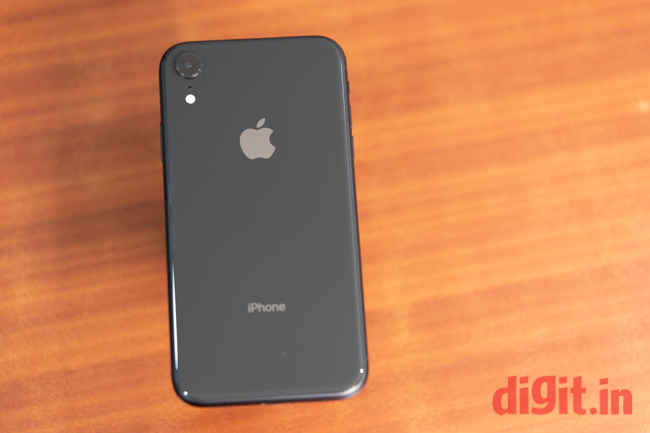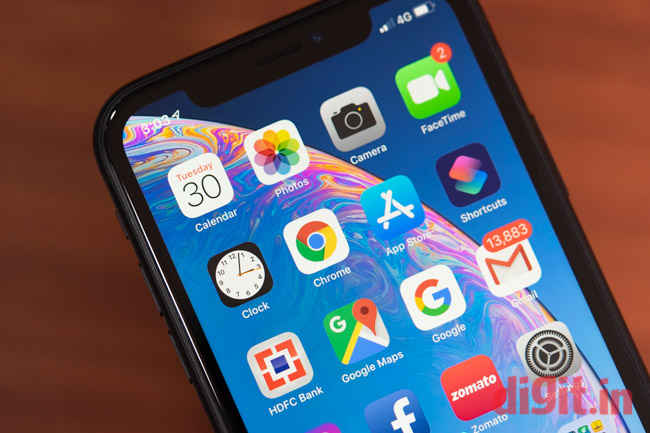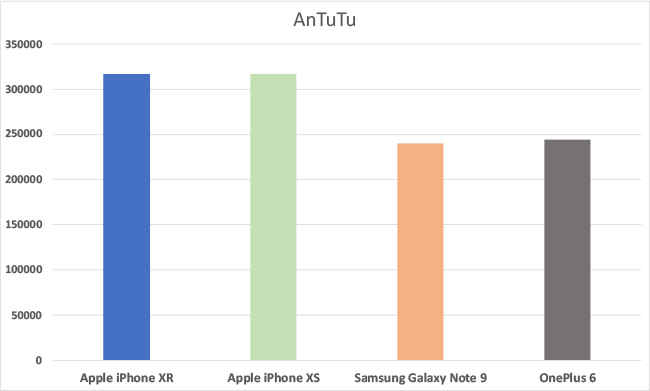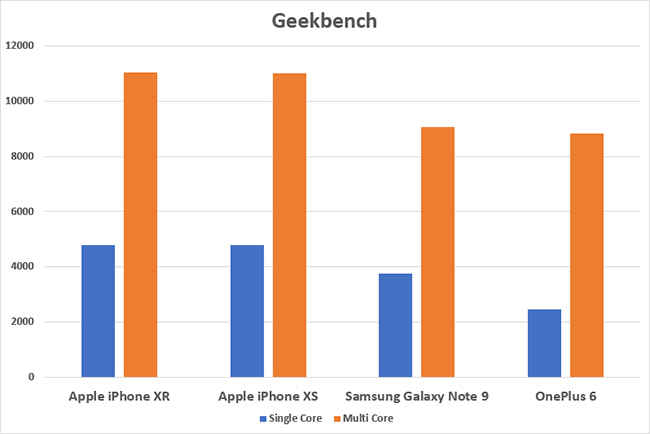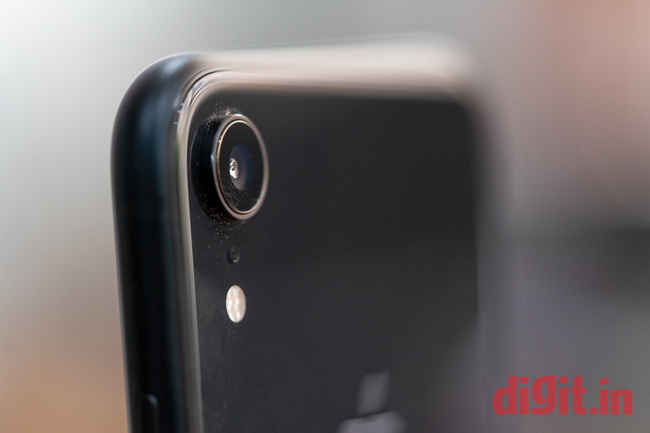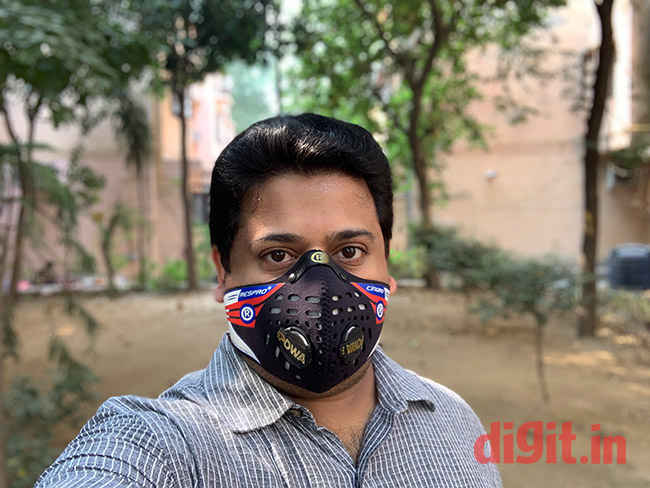Apple iPhone XR Review : A few steps forward, a few steps back
The iPhone XR sports Apple's fastest processor yet, the A12 Bionic chip and comes with a near-bezel-less design. However minor things like the lack of an HD display, no dual camera and a terribly limited portrait mode makes the smartphone feel like an unnecessarily overpriced device.
What’s in the Box
Apple hasn’t deviated much from what they include in the box of the new iPhone. While expectations were high about an included fast charger or a USB-C to Lightning, sadly, no such items are in the box. In fact, Apple has gone ahead and removed the Lightning to 3.5mm headphone jack converter. Here’s everything that Apple includes in the box of the iPhone XR.
- Apple iPhone XR
- SIM tray removal tool
- Welcome leaflet and Apple logo stickers
- USB-A to Lightning cable
- Standard wall charger
- Lighting Earpods
Apple iPhone XR Key Specifications
- Processor: A12 Bionic
- RAM: 3GB
- Storage: 64/128/256GB
- Display: 6.1-inch IPS-LCD
- Display Resolution: 1792X828, 326 ppi
- Rear Camera: 12-megapixel f/1.8
- Front facing camera: 7-megapixel f/2.2
- Battery: 2658mAh
- IP67 rated
Build and Design
The minute you lay your eyes on the iPhone XR, you get a flashback to the iPhone 5C. The XR comes in a multitude of colours (6 to be exact), of which all but silver and black are worth your time. Personally, I was partial to the Coral finish, but unfortunately, we were allotted a black unit of the iPhone XR. The colours are a unique aspect of the iPhone XR’s design, in fact, it’s the most prominent aspect of the phone and on that account, we have sadly been shortchanged. Anyhow. The anodized aluminium has a matte finish unlike the glossy one found on the iPhone XS, so that’s good. The back of the iPhone XR is treated with the same colour treatment as the frame, but the colouring is done below the glass back. The glass back still attracts fingerprints like every other phone with a glass back, but the aluminium frame does feel very solid and easy to get a grip on.
Unlike the iPhone XS and XS Max which are IP68 rated, the iPhone XR has an IP67 rating, meaning it can withstand being submerged under water up to a depth of 1 meter for a maximum of 30 minutes. Apple says that even though this isn’t IP68 rated, they have tested the iPhone XR to be resistant to the usual suspects such as beer, juice, soft drinks etc. Looking at the iPhone XR from the front, you will be hard-pressed to distinguish it from the X-series. Apple has unified the design across its entire smartphone range for 2018, which means that you get a premium design found on the super expensive iPhone XS on an iPhone that costs 25 percent less.
Display
The iPhone XR’s display is the first sign of where the phone takes a huge step back. The iPhone XR has a 6.1-inch IPS-LCD display which Apple calls “Liquid Retina” and is apparently the best LCD display the company has produced to date. With a resolution of 1792×828, the display has a pixel density of 326ppi. For some reason, Apple thought it was a good idea to increase the display size over the iPhone 8 Plus but reduce the resolution so that the pixel density matches that of the iPhone 8. It is a little bothersome that a phone that costs more than the iPhone 8 Plus at launch doesn’t even have an HD screen. If you’re a “by-the-numbers” kind of person, you may not appreciate this. The iPhone XR has slightly thicker bezels than the iPhone XS, but honestly, it is in no way a detriment.
To test the display’s adeptness for daily use, we tested out the quality of video playback across YouTube, Netflix and Amazon Prime Video. YouTube allowed me to select the playback resolution for all the videos all the way up to 4K, but the playback resolution will always be limited to the 720p. If you have anything above the very basic Netflix plan, get ready to be disappointed at the lack of pixels and HDR. It pinched a little to know that someone would spend Rs 76900 on the iPhone XR and not be able to make the most of their Netflix subscription. Despite the shortfall in the number, watching content on the iPhone XR’s display feels satisfactory, with very impressive colour reproduction. Black levels too are fairly good, despite the LCD panel which generally isn’t capable of rendering true blacks.
The display is very legible under bright lights with minimal reflectance. It isn’t as bright as the iPhone XS’s panel, but it’s still bright enough for you to go about your daily activities such as playing games, texting, emailing, browsing social media etc without any problems.
While content looks good on the iPhone XR, put it next to an iPhone XS or even the similarly sized Samsung Galaxy S9 and you will start to see the impact of the less-than-HD resolution. Even the LG G7+ ThinQ offers an IPS-LCD display, but with 2K resolution and an HDR10 enabled panel. It’s even brighter than the iPhone XR’s display and costs Rs 40,000. At this point, the iPhone XR is the only flagship of 2018 which doesn’t even sport an HD display and that, frankly, is disappointing. The display is definitely functional, you don’t feel like you’re viewing content on a “poor quality” display, but you do definitely notice the lower resolution, but only if you have regular access to a smartphone with a higher resolution (2K or above) display. For anyone who cares, the iPhone XR’s display doesn’t have Force Touch either. I personally love the feature and it is just weird to not see a feature which was present in the previous generation of the iPhone.
Performance
~Performance is one area where the iPhone XR makes significant leaps forward. The XR is powered by the same A12 Bionic processor as the more expensive iPhone XS (Review). The new A12 Bionic is manufactured on the 7nm process, making it not only more powerful than the 10nm counterpart, but also more power-efficient. In that regard, the iPhone XR does not disappoint. Throughout the benchmarks, the iPhone XR maintained its lead over all Android flagships and matched the performance of the far more expensive iPhone XS and iPhone XS Max (Review).
When it comes to real-world performance, you’d be hard pressed to differentiate between the iPhone XR and the far more expensive models. Whether it's editing the RAW files from the camera or playing PubG, you will not find a single reason to be unhappy. There is literally nothing that makes the iPhone XR slow down, although, the phone does tend to heat up under heavy use. I observed that after 15 minutes of playing Asphalt 9, the area just below the camera module did get pretty hot. I repeated the test several times over the last few weeks using Asphalt 9, Fortnite and also Injustice 2 and noticed that heating, in general, is an issue. The phone doesn’t get hot enough to cause alarm, but it did get warm enough for us to take notice since most flagships that have been tested in our test lab in the last few months have not had such an issue.
Overall, as a daily driver, the iPhone XR is nothing short of a thoroughbred when it comes to performance. It does not give into any app and cuts through even the most demanding workloads like a hot knife through butter.
Camera
The camera, in some ways, again feels like a slight step back when considering the iPhone XR. You only get a single camera on the back, a 12-megapixel sensor paired with an optically stabilized f/1.8 lens. The new sensor has more phase detect pixels now for better focusing and a wicked smartHDR algorithm that takes imaging to the next level. Apple has decided to omit the telephoto lens from the XR, as a means of making sure you remember that you bought the “cheaper” iPhone.
When it comes to sensor performance, again, the wide-angle lens delivers results at par with the iPhone XS. The photos from daytime are well lit, with the exposure well balanced to accommodate the highlights and the shadows. For well-lit scenarios, the iPhone XR does exceedingly well. Even in low light, the imaging stack is no slouch, with the results looking properly exposed, but lacking in detail due to aggressive noise reduction.
The iPhone XR's 26mm wide-angle camera is capable of capturing great photos in good light
Indoor shots with average (or higher) amount of lighting come out looking good
The iPhone XR also happens to offer portrait mode on a single lens, but unlike what we see on the Google Pixel smartphones, this one is purely a machine-learning based solution and not a great one at that. For starters, the field of view in Portrait Mode remains that of the wide-angle lens. While this isn’t a make-or-break by itself, what will be a deal breaker for many is the fact that Portrait Mode only works if there is a person in the frame. Even then, there are distance-based limitations. What this means is that you cannot use Portrait Mode on the iPhone XR to shoot nice photos of objects or anything that’s not a human being. I take a lot of photos of my dog and not being able to shoot him in Portrait Mode was a huge bummer. However, there are some third-party developers who are working on bringing Portrait Mode for pets and objects to the iPhone XR, but there’s no word on when this would actually happen. The iPhone XR does offer three of the five portrait lighting mode, so that’s good.
Portrait Mode is limited to shooting human faces only
Regardless, the iPhone XR does take marvellous images, but the lack of a secondary camera is definitely going to pinch, especially given that the XR is priced the same as last year’s iPhone 8 Plus. If you must have a secondary lens, then you have no choice but to go for the more expensive iPhone XS.
You can see full resolution, unedited images from the iPhone XR in our Flickr Gallery.
Front Facing Camera
The iPhone XR offers the exact same front-facing setup as the more expensive iPhone XS, so that is a step forward. There’s a 7-megapixel camera with a f/2.2 lens which is augmented by a depth sensor for portrait mode. Honestly, the front-facing camera does a far better job at portraits than the rear camera, thanks to hardware that allows for the camera to capture more than just pixels. The result is images worthy of not just Instagram, but also perhaps display photos across whatever platform or even prints. The front facing camera also offers autofocus which is great if you’re taking photos in tricky conditions, such as dense crowds. There’s very little reason to be unhappy with the performance of the iPhone XR’s front-facing camera, seeing how it performs at par with the more expensive iPhone XS and the iPhone XS Max.
Battery
The iPhone XR comes toting a 2952mAh battery which lasted 8 hours and 15 minutes on the Geekbench battery test. In real life, the phone’s battery easily lasted a day and a half, despite the LCD display. The lowered resolution of the panel probably stems the battery drain, but the A12 Bionic chipset can also be attributed to the impressive battery life. Basically, despite the bigger display and using an LCD panel at that, the iPhone XR manages to last longer than the iPhone XS, and almost as long as the iPhone XR.
Bottomline
The Apple iPhone XR is supposed to be the "affordable iPhone" and in the spirit of that, Apple has removed a few features as a means of incentivising people to go for the higher end iPhone XS or the iPhone XS Max. While you don't get the dual-camera setup or even a full HD display, you do get the fastest processor in the smartphone world right now to cut through any demanding task. The 64GB Apple iPhone XR still makes sense for people who may be upgrading from the iPhone 6 or earlier, but the higher storage variants make even less sense. The 256GB variant which we reviewed costs Rs 91,900 just a few thousand short of the iPhone XS which is a no-compromise smartphone. The base variant of the iPhone XR costs Rs 76900 and for the price, there are enough Android counterparts which offer a no-compromise feature-set. If you are someone who's tied into the Apple eco-system and refuse to go outside of it, and if you have one of the older iPhones, then you could consider the iPhone XR. However, even when paying such a premium, you will have to accept the absence of certain essentials features.
Swapnil Mathur
Swapnil was Digit's resident camera nerd, (un)official product photographer and the Reviews Editor. Swapnil has moved-on to newer challenges. For any communication related to his stories, please mail us using the email id given here. View Full Profile

